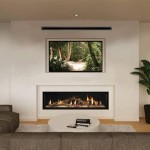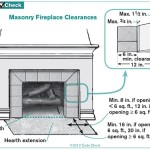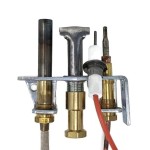Indoor Propane Fireplaces: A Comprehensive Overview
Indoor fireplaces have long been coveted for their aesthetic appeal, warmth, and ambiance. While traditional wood-burning fireplaces remain popular, propane-fueled models have emerged as a convenient and efficient alternative, offering numerous advantages for homeowners seeking a hassle-free heating solution and captivating focal point. This article delves into the specifics of indoor propane fireplaces, examining their benefits, installation considerations, safety features, maintenance requirements, and aesthetic options.
Benefits of Indoor Propane Fireplaces
Propane fireplaces offer a compelling combination of advantages that make them an attractive option for a wide range of homeowners. These benefits extend beyond simple heating, encompassing aspects of convenience, efficiency, and environmental impact.
One of the primary advantages of propane fireplaces is their ease of use. Unlike wood-burning fireplaces that require sourcing, storing, and manually loading wood, propane fireplaces operate with the simple flick of a switch or the push of a button. Many models include remote controls, allowing for convenient adjustment of flame height and heat output from the comfort of a sofa or armchair. This ease of use is particularly attractive for individuals with mobility limitations or those who simply prefer a more convenient alternative to traditional wood burning.
Efficiency is another significant advantage of propane fireplaces. Propane provides a high heat output relative to its cost, and modern propane fireplaces are designed for optimal energy efficiency. They often feature thermostatic controls that automatically adjust the flame to maintain a consistent room temperature, preventing energy waste. Furthermore, propane fireplaces vent directly outside, eliminating the heat loss associated with traditional chimneys. This improved efficiency translates to lower heating bills and a reduced carbon footprint.
Compared to wood-burning fireplaces, propane fireplaces produce significantly fewer emissions. Burning wood releases particulate matter and other pollutants into the air, contributing to indoor and outdoor air pollution. Propane, on the other hand, burns cleanly, producing minimal emissions. This makes propane fireplaces a more environmentally friendly option, particularly in areas with air quality concerns.
Propane fireplaces also offer a high degree of versatility in terms of design and installation. They are available in a wide range of styles and sizes, from traditional log sets to contemporary linear designs, allowing homeowners to find a model that complements their existing décor. Furthermore, propane fireplaces can be installed in a variety of locations within the home, as they do not require a traditional chimney. Vent-free models are particularly versatile, as they can be installed against any wall with access to a propane supply line. This flexibility makes propane fireplaces a suitable option for both new construction and renovation projects.
Installation and Safety Considerations
While propane fireplaces offer convenience, proper installation and adherence to safety guidelines are paramount to ensure safe and reliable operation. The installation process involves connecting the fireplace to a propane supply line and ensuring adequate ventilation, while safety considerations encompass everything from leak detection to proper maintenance.
The installation of a propane fireplace should be performed by a qualified and licensed professional. This ensures that the fireplace is installed according to local building codes and manufacturer specifications. The installation process typically involves running a propane supply line from a propane tank or natural gas line (with a conversion kit) to the fireplace location. The supply line must be properly sized and pressure-tested to prevent leaks. The installer will also ensure that the fireplace is properly vented, either through a direct-vent system or, for vent-free models, through adequate room ventilation.
Direct-vent propane fireplaces utilize a sealed combustion system that draws air from outside the home and vents exhaust fumes directly outdoors through a concentric pipe. This system ensures that no combustion byproducts enter the living space, making it a safer option than traditional wood-burning fireplaces. Vent-free propane fireplaces, on the other hand, do not require a vent. They burn propane very efficiently, producing minimal emissions. However, they do release small amounts of water vapor and carbon dioxide into the room. For this reason, vent-free propane fireplaces should only be used in well-ventilated areas and should never be used as the primary heating source.
Safety features are crucial for any propane fireplace. All models should be equipped with a safety pilot system that automatically shuts off the gas supply if the flame is extinguished. Many models also include a carbon monoxide detector, which provides an added layer of protection. Homeowners should regularly inspect the fireplace and propane supply line for leaks or damage. A simple soap and water test can be used to detect leaks in the supply line. If a leak is suspected, the gas supply should be shut off immediately and a qualified technician should be contacted.
Regular maintenance is essential for ensuring the safe and efficient operation of a propane fireplace. This includes cleaning the burner assembly, inspecting the pilot light, and checking the venting system. The frequency of maintenance will depend on the frequency of use, but a general rule of thumb is to have the fireplace serviced annually by a qualified technician. The technician can identify and address any potential problems before they escalate into more serious issues.
Aesthetic Options and Design Integration
Beyond their functional benefits, indoor propane fireplaces offer a wide range of aesthetic options, allowing homeowners to create a visually stunning focal point that complements their personal style and enhances the ambiance of their living space. The versatility of propane fireplaces allows for seamless integration into various design schemes, from traditional to contemporary.
Traditional propane fireplaces typically feature a classic log set design, replicating the look and feel of a traditional wood-burning fireplace. These models often incorporate realistic-looking artificial logs and glowing embers, creating a warm and inviting atmosphere. They can be incorporated into existing fireplace mantels or installed with a custom surround to create a focal point in the room. Traditional propane fireplaces are an excellent choice for homeowners who appreciate the timeless elegance of a traditional fireplace but prefer the convenience and efficiency of propane.
Contemporary propane fireplaces offer a more modern and minimalist aesthetic. These models often feature linear burners, glass media, or decorative stones, creating a sleek and sophisticated look. They can be installed as freestanding units, wall-mounted units, or built into custom enclosures. Contemporary propane fireplaces are an ideal choice for homeowners who desire a contemporary living space with a touch of warmth and ambiance.
Linear propane fireplaces have gained popularity in recent years. These models feature a long, horizontal burner that creates a dramatic visual effect. Linear fireplaces are often installed in modern homes and apartments, providing a striking focal point that complements the clean lines and minimalist design. They are available in a variety of sizes and finishes, allowing homeowners to customize the look to suit their individual taste.
Beyond the fireplace itself, the surrounding décor can play a significant role in enhancing the overall aesthetic. A well-chosen mantel, surround, and hearth can complement the fireplace and create a cohesive design. Homeowners can also incorporate decorative accessories, such as candles, artwork, and plants, to personalize the space and create a warm and inviting atmosphere. The possibilities for design integration are virtually endless, allowing homeowners to create a truly unique and personalized fireplace experience.
Ultimately, the selection of an indoor propane fireplace involves careful consideration of factors such as heating needs, budget, aesthetic preferences, and local building codes. Consulting with a qualified professional can help homeowners navigate the options and select the model that best meets their needs and enhances their living space. With proper installation and maintenance, an indoor propane fireplace can provide years of enjoyment and warmth.

Propane Fireplaces An Economic Fuel

Propane Fireplaces Accessories Your Trusted Partner

Ventless Gas Fireplace Propane

Propane Fireplace Maintenance Premier Companies

Propane Fireplace Inserts Gas Log Sets Tunkhannock Pa Ace Robbins

10 Advantages Of An Indoor Propane Fireplace Surplus

Procom Vent Free Indoor Stove 25 000 Btu Standing Dual Fuel Propane And Natural Gas 170173 The Home Depot

Gas And Propane Fireplaces Nanaimo Vancouver Island

Linear Gas Fireplace Burner System Indoor

Fireplace S In Tenneessee Gas Logs More Admiral Propane








